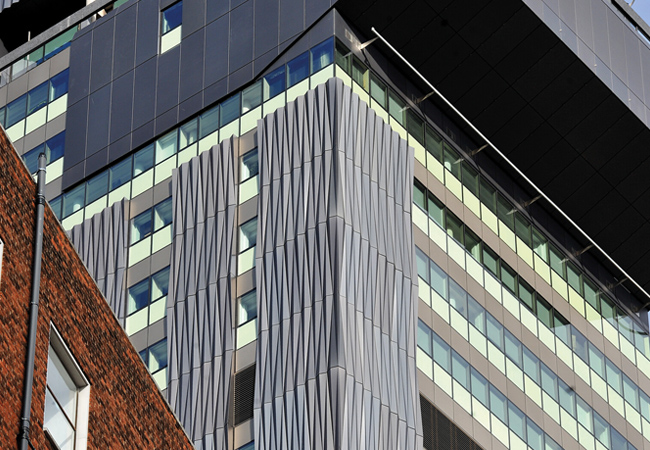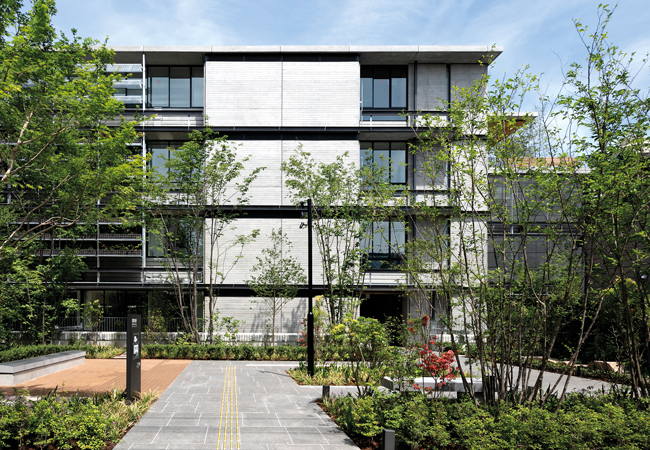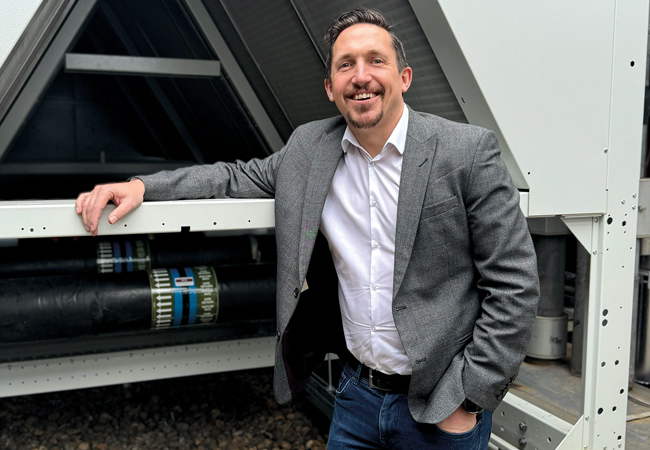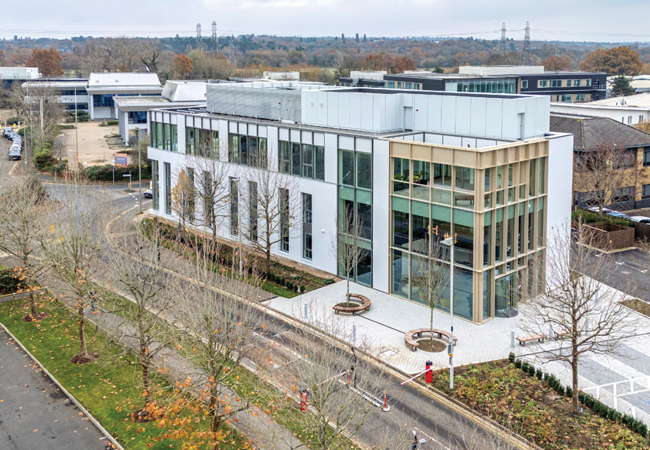
'Stephen Hill believes the industry must adopt whole-life carbon thinking'
The interest in the effective delivery of heating, ventilation and air conditioning (HVAC) in high-rise buildings has increased in recent years as a he decarbonisation of heat in buildings is one of the most pressing challenges that we face today. Heating buildings requires a significant amount of energy, but with low energy prices – and an industry beset by a compliance mindset – we have historically struggled to get decarbonisation of heat on the table as a priority.
All that is changing, however, and it is now widely accepted that decarbonisation is essential to reach net zero targets and tackle the climate crisis. The challenge is how best we go about it. Ultimately, a shift is needed in how we view the decarbonisation of heat – both from a buildings-led perspective and an infrastructure-led perspective.
Buildings-led considerations
Having fought to get decarbonisation on the table, our next challenge, as an industry, is to look at this not just in terms of operational energy and carbon, but also in terms of whole life carbon, including embodied carbon impact. Our collective instinct leads us to follow the conventional ‘fabric first’ approach to decarbonising heat, which does work well in some cases. This approach is focused on improving the building fabric (windows, walls, and so on) to increase airtightness and enhance insulation, and reduce the demand for heat. Attention then turns to addressing the heating and ventilation systems, with upgrades able to operate more effectively with reduced façade loads.
When transitioning away from a high-temperature fossil fuel heating system to an all-electric heat pump system at a lower temperature, a key benefit of the fabric-first approach is a reduction in demand. It is currently assumed that there is no need for upgrades to distribution systems and heat emitters, but the evidence for this is incomplete. More work to model this and test it in the real world is required. The hope is that a reduction in the heating capacity is in line with the reduced demand.
However intuitive the ‘fabric first’ approach may seem, the high embodied carbon associated with façade interventions means this approach runs the risk of unintended consequences for total whole life carbon impact. We need to be open to alternative solutions and sequences, and follow evidence and analysis rather than intuition to find the lowest whole life carbon solution.
Each building and project is different, and decisions about how to decarbonise heat most effectively need to be made on a case-by-case basis
The mindset change required to adjust to whole life carbon thinking is easy to underestimate. The mantra is ‘less is more’, which runs counter to the energy efficiency-prioritised approach that many of us are used to. Each building and project is different, and decisions about how to decarbonise heat most effectively need to be made on a case-by-case basis.
A recent study conducted by Arup, on the decarbonisation of a central London academic estate, gave us valuable insights. With more than 100 buildings and an energy infrastructure heavily reliant on district energy and gas-fired combined heat and power (CHP), the challenge in finding a route to the client’s target of net zero by 2040 is clear.
Our initial short study in 2021 took the conventional ‘fabric first’ route for older assets, with more limited intervention in newer buildings. While this puts the organisation on a pathway to achieving its 2040 target, the upfront embodied carbon investment is significant, and the net carbon saving in the first 10-15 years is limited.
We are now planning the transition in more detail, which includes investigating alternative paths to the ultimate objective. One option we are considering is an early intervention in the district energy system, moving to a high-temperature heat pump system, including water-to-water step-up heat pumps. This brings decarbonisation forward, especially when the client’s procurement of 100% green energy is factored in.
Energy demand remains high initially, but reduces over time through building interventions, the timing of which are more aligned to material and equipment life-cycles, so better optimised from cost and whole life carbon perspectives. Once the interventions are complete, the step-up heat pumps are removed and the network transitions to low-temperature, higher-efficiency operation.

The NHS’s Guy’s Tower after environmental improvements
As well as raising questions over the sequence and timing of interventions, prioritising whole life carbon offers a different perspective on the extent of fabric upgrades. Interventions are always a balance between embodied carbon investment and operational carbon saving. While airtightness improvements are generally whole life carbon positive, improvements in insulation must be scrutinised to ensure the correct balance is struck. Triple glazing, for example, rarely makes whole life carbon sense in the UK’s relatively mild climate. We also need to be careful about where and how we apply Passivhaus in the UK. While the robust approach to detailing brings proven benefits and reliably low energy outcomes, in some cases, the additional carbon invested in the façade may not be justified by the savings.
Finally, it is important to recognise that, while tackling the climate crisis is an imperative, our approach to retrofitting the built environment is only one part of a broader sustainability agenda. The recent history of diesel cars shows only too clearly the dangers of focusing on one outcome at the exclusion of all others.
The implications of the Grenfell disaster and subsequent Building Safety Act will, inevitably, be leading considerations in whether, when and how we intervene to upgrade façades. The recent spotlight on the dangers of mould in housing demonstrates how a combination of poor façade performance and inadequate ventilation can combine with devastating consequences. Where intervention is required to tackle these issues, whole life carbon optimisation of the solution becomes an added benefit rather than the primary objective.
Infrastructure-led considerations
The approach to decarbonisation for buildings is largely predicated on a universal switch to all-electric and procurement of 100% renewable electricity. Currently, this appears achievable – grid capacity is available and renewable tariffs are affordable. However, the ‘dash for electric’ is likely to prove considerably more complex than the dash for gas in the 1990s. The transition to all-electric encompasses buildings (commercial and domestic), as well as public and private transport, never mind manufacturing and other sectors. The challenge is significant.
Several things flow from this. The UK Green Building Council’s 2021 paper Net zero carbon: energy performance targets for offices estimated a need to reduce our demand for energy by 60% to achieve net zero by 2050. This is illustrative of the magnitude of this challenge.
In addition, we can’t rely solely on the electricity grid. While gas-fired CHP is falling out of favour, heat networks remain an alternative in the right circumstances, specifically where waste heat is available from industrial facilities and the urban density offers sufficient demand. An example of this is the North London Heat and Power Project, which will take waste heat from the processing of a quarter of London’s domestic waste to provide electricity for 127,000 homes, plus heat and hot water to 60,000 homes and businesses.
We must leave no stone unturned in our search for sources of renewable heat and give more consideration to when we use energy, and how much
While the move to hydrogen is in its early stages, it is a key part of the government’s long-term infrastructure transition to net zero. Hydrogen has a potential role to play in industry, transport, power and heating, and is likely to be prioritised for cases with a limited ability to switch to all-electric – but what these are is not yet clear.
The UK government is still collecting evidence for a decision on domestic heat that will be taken in 2026. As we move to a more renewables-driven grid, we will need to prepare for intermittent wind and solar, and the role of hydrogen as a storage medium will become increasingly important. Managing this transition will be crucial to the future of the building sector. Currently, carbon reporting is based on annual average carbon factors. Commercial electricity tariffs provide some incentives to minimise demand at peak periods through the transmission network use of service charges, which relate to demand during triad periods.
This will have to go much further, with clear incentives on the carbon and cost sides, for businesses and households to fully engage in active demand management. With the smart meter rollout and increase in smart systems and devices, the technology is there, but a clear incentive is needed to drive lasting change.
Different approaches for different buildings
The decarbonisation of heat in buildings is a crucial step in our transition towards a net zero economy and limiting the impact of climate change. The ‘fabric first’ approach is not always the best option, and we need to have an open mind and think about the whole life carbon impacts of the solutions we are considering.
From an infrastructure perspective, electrification can’t be seen as a silver bullet. We need to drastically reduce our demand for energy to transition to a renewable grid. We must leave no stone unturned in our search for sources of renewable heat and give more consideration to when we use energy, and how much.
Collaboration will be key: working with the sector, government and other businesses to balance the urgent need for decarbonisation with other critical outcomes, including safety, health and wellbeing.
About the author
Stephen Hill is associate director at Arup and is the 2023 CIBSE Engineer of the Year.
CIBSE Building Performance Awards
The 2024 Building Performance Awards are now open for entries. For details of how to enter the Engineer of the Year, or any of the other award categories visit www.cibse.org/bpa






